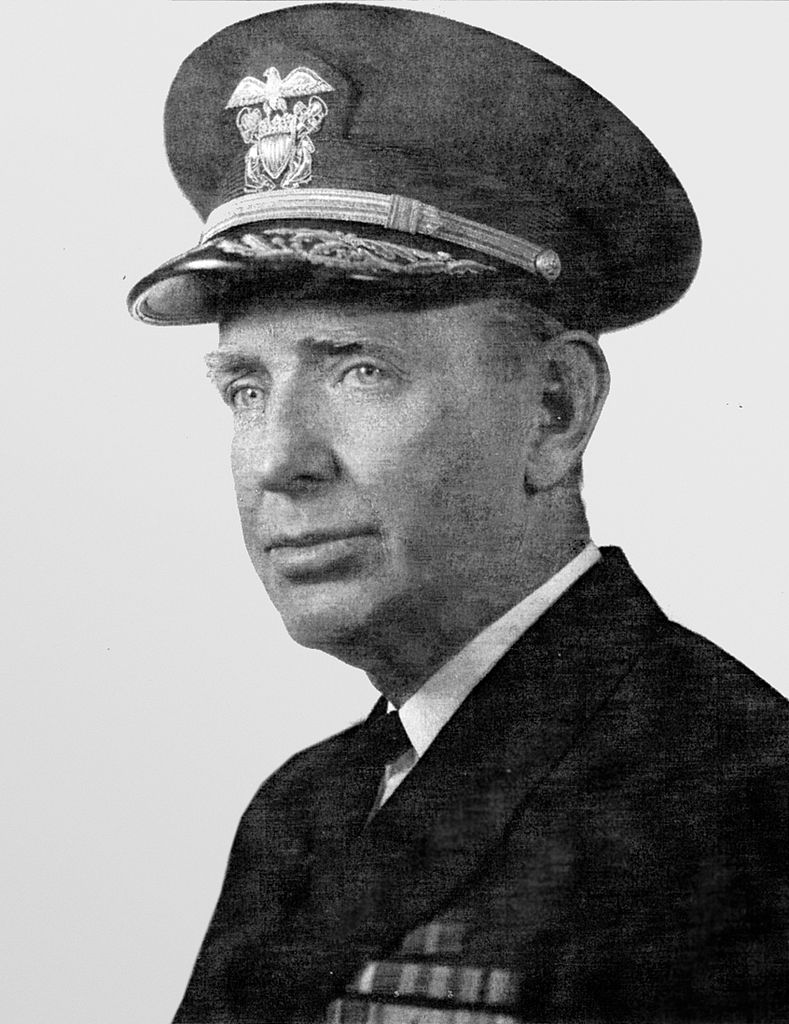William R. Purnell (1886-1955) was a Rear Admiral in the US Navy and served as the Navy liaison on the Military Policy Committee for the Manhattan Project. He also represented the Navy on Tinian Island.
Purnell graduated from the US Naval Academy in 1908 and served in World War I, earning the Navy Cross for his service. He served continuously in the Navy, and was promoted to Rear Admiral in September 1941, just before the outbreak of war. He served as chief of staff to the Commander of the Asiatic Fleet, who at the time was Admiral William Glassford. He continued to serve in the same role when the Asiatic Fleet was reorganized as part of Allied Forces, Southwest Pacific Area. He was awarded the Distinguished Service Medal for those efforts.
MANHATTAN PROJECT INVOLVEMENT
In 1942, he was appointed by the Top Policy Group to be the Navy representative on the Military Policy Committee. He served concurrently on the staff of Admiral Ernest King, Commander in Chief of the US Fleet. The other members of the group were scientists Vannevar Bush and James Conant, respectively the committee’s chairman and alternate, and General Wilhelm Styer from the Army. They served as an intermediary between the Manhattan Project’s chief executive, General Leslie Groves, and the higher-ups in the government, including Secretary of War Henry Stimson.
Purnell had a specific role on the committee as the Navy liaison. He was tasked with keeping other Navy officers away from the project, despite their branch’s smaller role. He also secured transfers for people from his service to come to the Manhattan Project. This included bringing in Captain William “Deak” Parsons and others that would participate in Parsons’s Ordnance Division. He also liaised with other parts of the Navy when necessary. For example, he communicated with the Pacific Fleet’s Admiral Chester Nimitz about the activities on Tinian Island, and with the Office of Naval Intelligence in preparation for the Alsos Missions. Finally, he helped convey orders about the transport of bomb components to Tinian aboard the USS Indianapolis.
Purnell himself went to Tinian in 1945, serving as the official representative there of both the Navy and the Military Policy Committee. In order to avoid chain-of-command issues, he became a part of the decision-making apparatus known as the “Tinian Joint Chiefs” with Parsons (head of Project Alberta) and the Army’s General Thomas Farrell. The Joint Chiefs reported to Groves and General Hap Arnold in Washington, rather than the field commanders in the Pacific.
AFTER THE WAR
In the aftermath of the bombings of Hiroshima and Nagasaki, Purnell cited preventing American and Allied casualties as a major part of the rationale in dropping the bombs. He also stressed the secrecy of the project, saying that he did not even tell his wife.
He served as an important figure in the Navy for nuclear policy even after the war. He appointed Parsons head of a “Navy Atomic Bomb Group,” which made early plans for post-war Pacific nuclear tests. He was also instrumental in the creation of the Navy’s Special Weapons Office, and served on the Army-Navy evaluation board for Operation Crossroads. He retired from the Navy in 1946, and died in Palo Alto, California in 1955.
After Purnell’s death, Groves remembered him as a benevolent overseer: “Admiral Purnell had other duties in the Navy Department. He had never gone into the details. He was not scientific. He was just a well-trained Naval Officer of great competence and great ability.” He also credited the Admiral, years after the fact, with being the originator of a controversial idea: that two bombs, one soon after the other, should be used to ensure the Japanese surrender.





